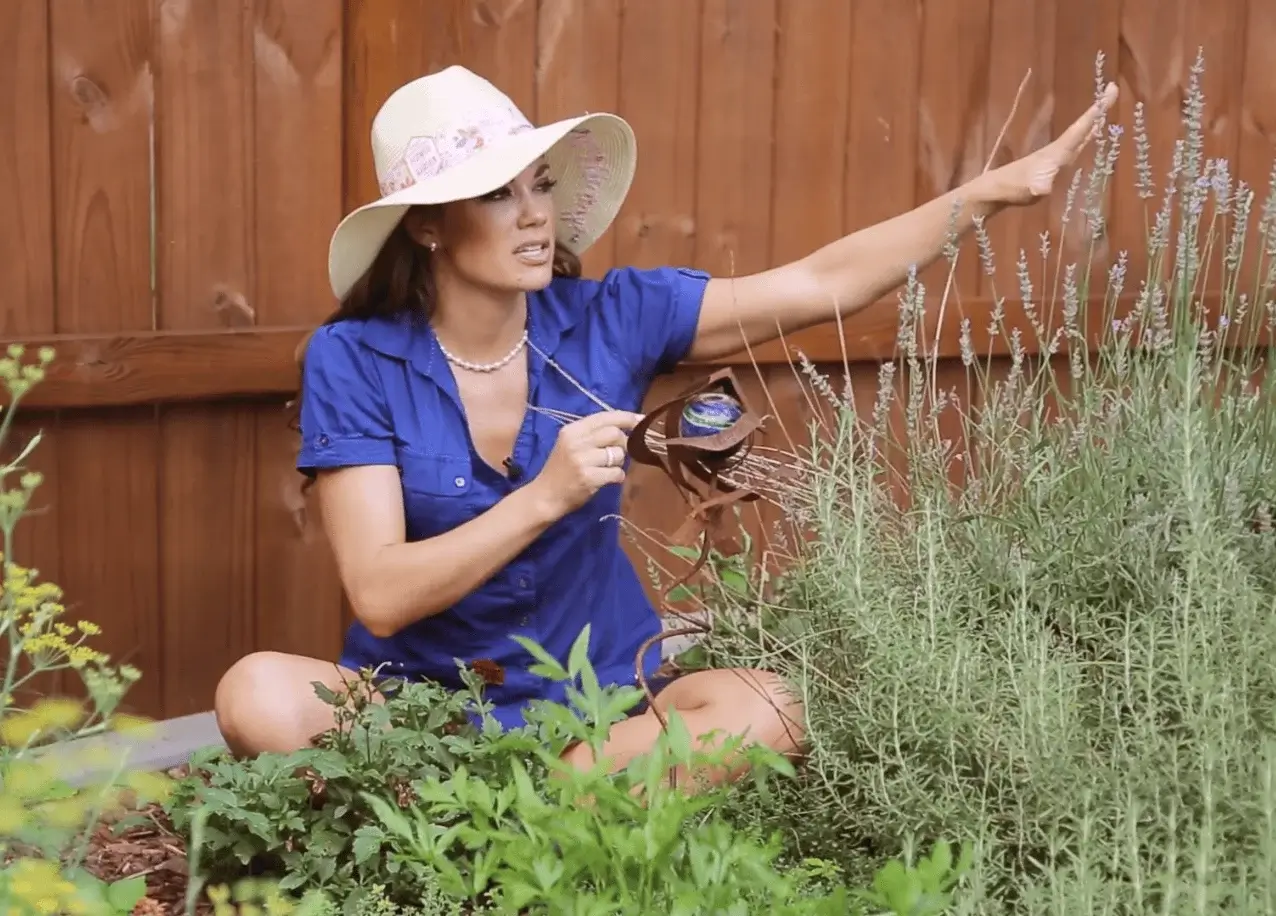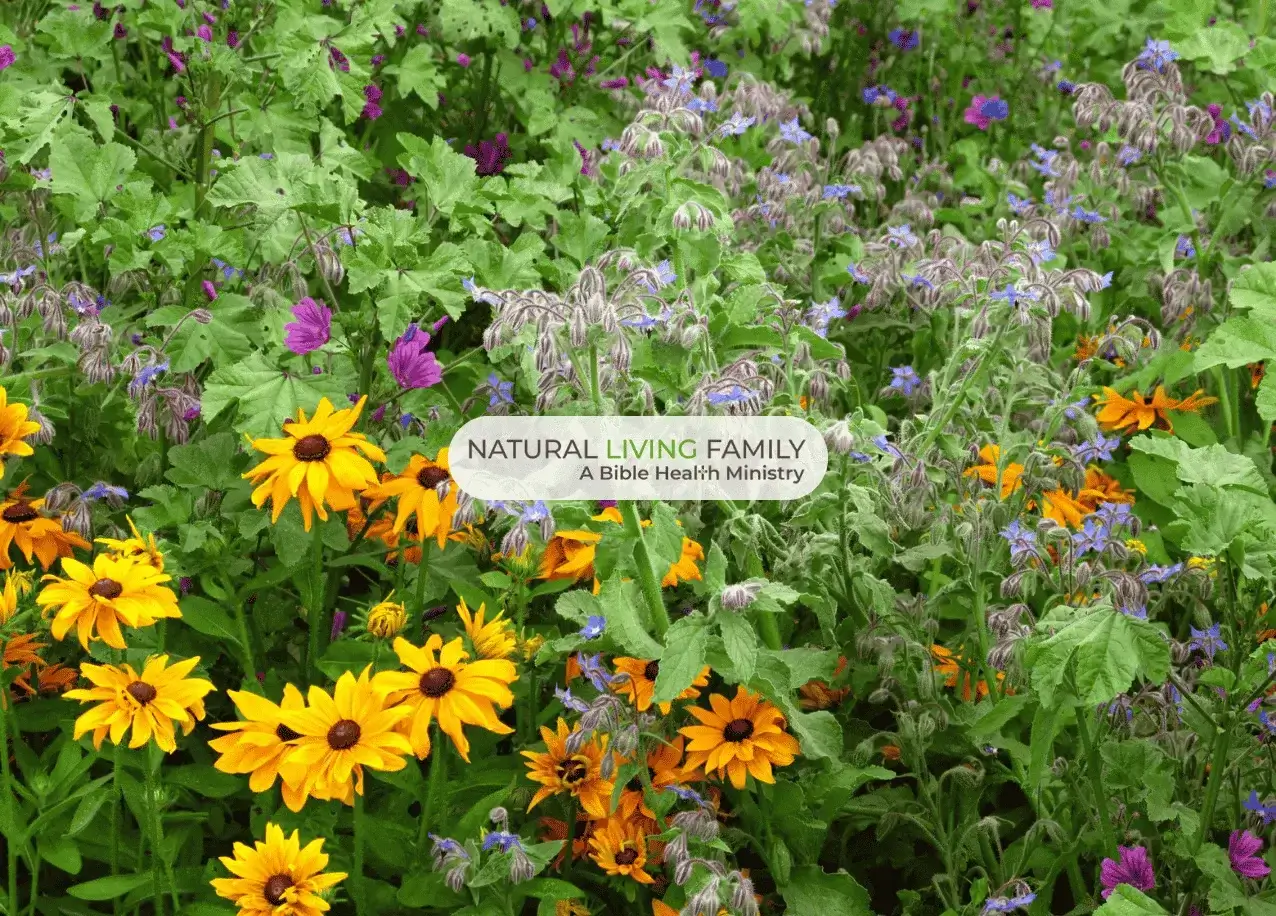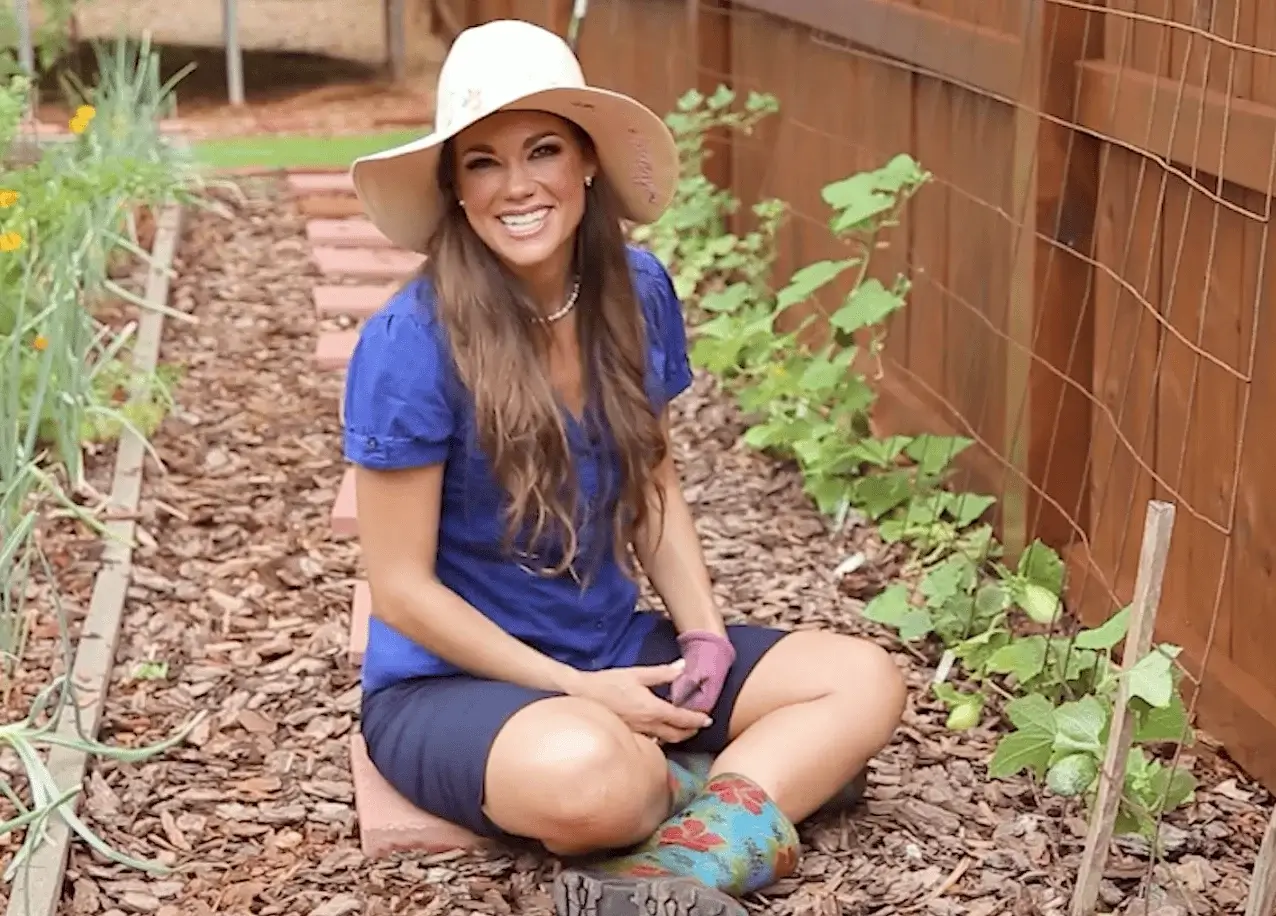Essential oils are a huge part of our lives, not only in our home through the use of essential oils via diffusing, but outdoors as well through the relaxing and rejuvenating effects of a garden filled with aromatic plants. Consider it nature’s aromatherapy!
You know we love the amazing benefits of essential oils in our family, but there is just something even more amazing about being outside in nature and enjoying God’s beautiful plants. And even better are the fragrant flowers and aromatic herbs that provide a delight for the senses. Creating a low-maintenance, scented garden design is a wonderful way to create a space in your own yard that allows you to enjoy these wonderful blessings.
Table of Contents
How to Make an Aromatherapy Garden Design
When planning a low-maintenance aromatherapy garden, there are a number of things that you should consider.
- Aromatherapy garden design starts with location. If your yard layout allows, situate your fragrance garden near the windows of your home so that you can enjoy the aromatic flowers and herbs from indoors on days when you open the windows.
- For low-maintenance gardening, think minimally. Choose a few fragrant plants that you truly enjoy, maximizing the impact without worrying about care requirements for a large variety of plants with differing needs. Easy-to-grow annuals and low-maintenance perennials would be ideal.
- Select aromatic plants for your garden that do not require a lot of work to care for. Hardy plants that need little more than watering, weekly feeding, and light weeding will help you keep the low-maintenance aspect that popular herbs and kitchen gardens are known for.
- If space allows, include a comfortable seating area that will give you a space to kick back, relax, and enjoy your carefully designed, fragrant garden.
Some of these aromatic Lemon-Scented plants you can bring indoors in a windowsill garden to enjoy inside as well.
Lemon-Scented Plants for an Aroma Garden
Citrus scents are among the most popular in aromatherapy and there are a number of wonderful lemon-scented garden plants that are perfect in a low-maintenance aromatherapy garden. These plants offer a wonderful lemony fragrance that is fresh and invigorating as you enjoy the beauty of the garden that you have assembled.
- Lemon Thyme – The lovely green foliage of this easy-to-grow thyme has a wonderful lemon fragrance and flavor. It requires occasional trimming back but is useful in cooking so it is a great multipurpose aromatherapy plant.
- Lemon Basil – This is another plant that needs occasional pinching back, the lemon fragrance and taste of this amazing herb is wonderful in the aromatherapy garden and in the kitchen.
- Lemon Verbena – Perennial to Zone 9, the lemon verbena is treated as an annual in most garden zones. With adequate drainage, lemon verbena is a simple plant to grow during warm months. It’s a beautiful green herb, highly attractive, though the flowers are small. This classic citrus scent is one of the most wonderful aromatherapy garden ideas.
- Lemon Balm – Though it can become an invasive plant if you don’t take care, you can literally nip problems in the bud by removing flowers before they are able to spread seeds and turn your delicious-smelling lemon balm into a problem.
- Lemon Mint – This aromatic plant is simple to grow. Once it is started, you have to do very little to keep it alive! It also has a bit of a citronella scent that helps to repel pests like mosquitoes.
- Lemongrass – Replace ornamental grass with a fragrant, herbal option like lemongrass – one of my favorites! Mama Z always grows them as an annual but don’t let that fool you because it will easily reach 3 feet tall and wide.
Flowering Aromatherapy Garden Plants
There are a number of colorful bloom flowers and scented flowers that would make a perfect addition to your aromatic garden. Choose the fragrances and colors that are the most appealing to you. Use contrasting foliage and flowers to give yourself the visual aesthetic you want. And of course, you’ll be able to cut attractive flowers to bring the soothing fragrance indoors throughout the growing season.
Here are some favorite fragrant blooming plants for your garden:
- Camellia – A beautiful shade-tolerant shrub, camellias have fragrant blooms and
evergreen, glossy leaves. They are hardy in Zones 7-10 - Geranium – The sweet fragrance given off by geraniums is one of the most distinctive floral scents in the world. In fact it’s considered one of the best-smelling flowers by many gardeners. Sweet geranium is easy to grow from cuttings or from seed, making them a great fragrant flower to add to your garden. Try more than one of the varieties such as apple, lemon, mint, chocolate, and more!
- Lilacs – Give your lilacs shrubs rich, well-drained soil and plenty of sunlight, they will grow and thrive beautifully, providing you with a stunning view of their wonderful, fragrant flowers.
- Nasturtium – These lovely, low-maintenance flowers will grow in full sun to part
shade and look beautiful cascading over the edge of a planter. There are a wide variety of cultivars available so look for some proven heirloom seeds to start with. - Mock Orange – Mock Orange shrubs have lovely white flowers that give off a delicious-smelling, citrus fragrance and are fairly low maintenance, requiring just a bit of yearly pruning to keep them looking their best and producing their fragrant blooms.
- Rose – Fragrant roses are the best of both worlds because they give you long-lasting flowers that come back year after year and beautiful scents. Be sure you don’t accidentally plant a scentless hybrid tea. Mama Z always chooses her roses by sniffing them first and you may be surprised by the variety. Some roses have a spicy scent, while others have a sweet scent.
- Aromatic Annuals – Any gaps in your garden can be filled with fragrant annuals such as lantana, marigolds, sunflowers, or sweet alyssum. These are often great plants for attracting pollinators to the garden as well. If you have a favorite fragrant flower, be sure to plan a space for it so you can enjoy!
Fragrant Herbs for an Aromatic Garden
While we have a dedicated herb garden space as well, many herbs are fragrant and lend themselves nicely to inclusion in any garden space. Whatever garden plot you are designing for, leave room for one of these aroma superstars!
- Borage – This annual has edible flowers that are a pretty addition to salads or teas
and large fuzzy leaves that combine nicely with other plants in the garden. Seed in
the spring after the frost, and expect them to grow quickly until summer flowers. - Chamomile – Pollinators love this easy-to-grow herb just as much as we do! With its relaxing and beautiful scent, chamomile pairs well with many other fragrant plants. Bonus – you can harvest the blooms for a delicious homemade tea.
- Lavender – With proper drainage, lavender needs little else to thrive. You can enjoy the relaxing effects of the scent of this lovely flower in your low-maintenance, aromatherapy garden. This is also a popular plant in a pollinator garden to support healthy bee and butterfly populations!
- Rosemary – Hardy to Zones 6-10, rosemary is a semi-evergreen, fragrant shrub. Many think of rosemary in cooking, but the powerful scent of the foliage makes it beneficial in the aromatic garden. The flowers are usually blue, purple, or white. The fragrant plants are easy to grow, although they, like lavender, should not be overwatered or they can mildew.
- Sage – Sage is an easy-to-grow herb with fragrant fuzzy leaves. Mama Z loves the variegated varieties with gold or purple in the leaves. Kids also love the fuzzy broader leaves so they are perfect for a kid-friendly garden.
Low-Maintenance Fragrance Garden Ideas
When choosing fragrant garden plants and flowers, there are several things to keep in mind to ensure that you truly have low-maintenance garden ideas.
First, find out the growing conditions that are best for the plants that you are considering and compare those to the conditions in the yard space that you want to use for your scented garden. Plants that are not a good fit for your shade, soil, and climate conditions will require a lot of maintenance to keep going.
Keep it simple with plants that do not require a lot of pruning, cutting back, or dividing to grow and thrive. Invasive plants, such as vining groundcovers can be problematic and are not low-maintenance garden ideas as they require a lot of extra work to keep them from choking out other flowers and plants in your space.
Keeping pests at bay can be a challenging endeavor, even when you have plenty of time and energy to invest in your aromatherapy garden. One of the best low-maintenance garden ideas is to plant chrysanthemums and scented geraniums in your garden area as they naturally repel many of the most common pests, without harming pollinators.
Other natural, organic methods for controlling pests can be used, such as our essential oil ant and wasp killer by spot-treating the visible pests that you can see. By creating inviting outdoor spaces such as your new aromatic garden, you’ll find that maintaining your garden is a delight and not a chore.










